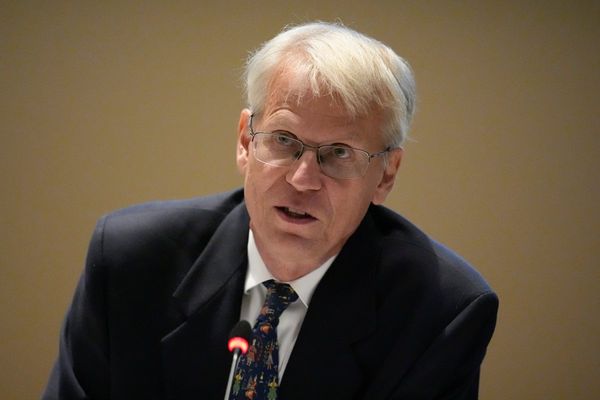
The CEO of the USGA, Mike Whan, has played down the controversy of driver testing at the PGA Championship, when it was reported that Rory McIlroy had to change his driver beforehand as it had become non-conforming.
The furore around the report led to the PGA of America releasing a statement confirming that it had requested the USGA carry out club testing, which had been confidential, before the tournament began.
It later transpired that among those whose drivers failed the test was eventual winner Scottie Scheffler, but, like the PGA of America, Whan insisted there was nothing unusual about the scenario.
Ahead of the US Women’s Open at Erin Hills, Whan was asked whether, in light of the controversy, the confidential nature of the testing could be lifted. He responded: “Last week or PGA Championship week was not an abnormal week, abnormal approach. One of the reasons honestly we keep that confidential is because of what happened. Everyone starts talking about there was this incredible moment.
"But the PGA Tour has asked us, as did the PGA of America, to help them with that. It's difficult for a player to know. It's even difficult for a manufacturer to keep a calibrated machine that will calibrate with us. So we provide that service to them just so they when it's over. If a player is - if the creep factor on the CT of the driver creeps over we tell them and they switch it out."

The issue was still a talking point almost two weeks on, when 2009 US Open winner Lucas Glover claimed on his SiriusXM PGA Tour Radio show that “most guys don’t give them their real driver anyway,” but Whan suggested there are safeguards to ensure gaming the system is not straightforward.
He added: “I read something where somebody said that people can doctor the system, but we keep serial numbers of the driver that were given us, and 90 percent of the drivers that were given us in those practice facilities when we test are played on the first tee, and we expect 10 percent of players to be making changes anyway. I don't think that's a real concern for us."
Whan also claimed the coverage was blown out of proportion, saying: “So yeah, it seemed like a big week to everybody else, but for us it was a pretty standard week. We've tested at a lot of Tour events, tours events and other Majors, so it wasn't that abnormal for us. It just seemed to get abnormal coverage.”

He also confirmed that there won't be testing at the US Women's Open, saying: “Yeah, we're not testing this week. You know me, I give you three quick answers. Number one is we really haven't seen CT creep significant on the women's game. At this point we haven't seen a lot of it to be perfectly honest with you.
"Since we don't do it as a regular thing on these tours, we don't try to make the Major completely different than something. But I would say if the LPGA or the LET said would you come out and more testing, we would certainly be up for that. I don't know that would find a lot of creep, but we'd implement it.
"And the third thing is, and you know this from following the LPGA like you do, when we go out to a men's event and if somebody has a driver that fails the CT, they literally generally walk across the street, down the end of the range, walk into a truck, grab a new head, exact head of what they had before, and move on.
"That isn't always the case in the women's game, and this will be a good week where I don't know if I would want to take somebody's driver out on a Tuesday that's one millisecond over and they can't really replace it.”
Whan also turned his attention to the strength of the women’s game, adding: “I think if women's golf was a stock, you'd buy it because it's what's driving our game forward. I'm not saying that because we're sitting here at the US Women's Open or because I'm a former LPGA commissioner. I'm telling you that's just factual. If the NGF were sitting up here and you asked him why is the game taking off, the first comment they would give you is women in the game.
"The first thing they would say about the future is the future of the game looks more female than it's ever looked in 100 years. That's an exciting time."







